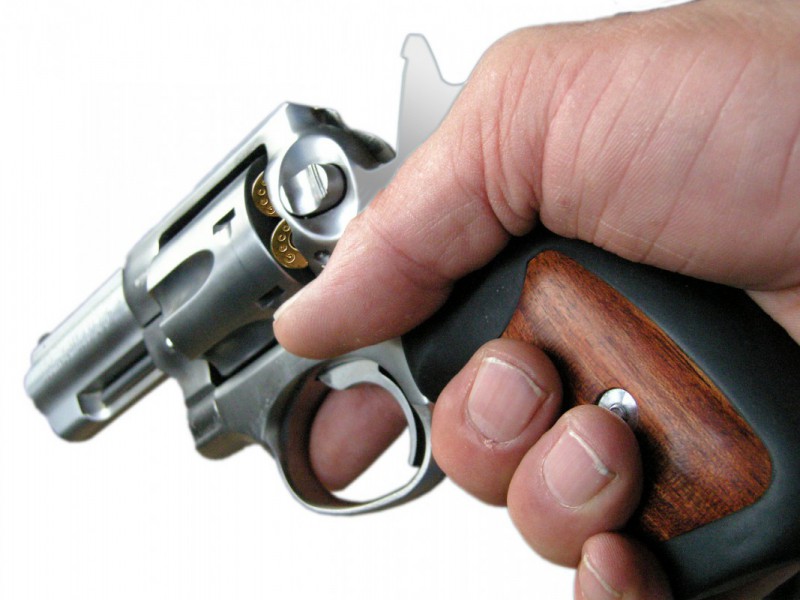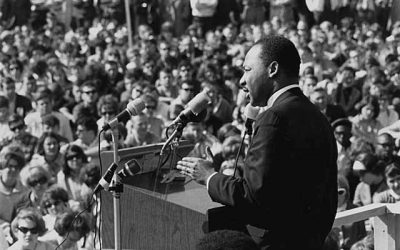On January 16, 2002, a law student at Virginia’s Appalachian School of Law shot and killed the dean, a professor and another student, while wounding three others.
How did the shooting spree end?
According to the Los Angeles Times, “Other students tackled (emphasis added) the gunman minutes after he stalked through the tiny campus of the Appalachian School of Law where he wounded three others during the shooting spree.” The New York Times also said that other students “tackled” the man. The Associated Press quoted another student, off-duty Sheriff Tracy Bridges, “‘I just reacted,’ said Bridges … who tackled (the shooter) with classmates.”
But, according to the same man the Associated Press quoted, Sheriff Tracy Bridges, the newspapers left out relevant information about how the shooting ended.
Here’s what Sheriff Tracy Bridges told me: “We were located in the classrooms just across from where the first professor was shot. We heard the first three shots. At the time, we didn’t really know that it was gunfire. Just a few seconds later, we heard the next three shots, followed by some screams. Another student and I went into the hallway. We ran into a professor and he said that Peter (the gunman) was in the building and that he was shooting. So I ran back to the classroom and, what students were left, I said you all need to get out — there’s a shooter in the building.
“We exited out the back stairwell of our building. As I exited, that day I was running a little late, so I did park in a faculty parking spot, which put my vehicle between me and the shooter. We saw him in the front yard there. I stopped at my vehicle and got my handgun out.
“As we approached Peter, I started giving him a lot of verbal commands. … I told him to drop his weapon, to get on the ground. … His back was to us, and once he turned around and saw that I had a weapon, he laid his weapon down and stuck his hands in the air. At that time we approached him, and there was somewhat of a struggle, but we took him to the ground and handcuffed him until the authorities got there.”
But why did they fail to mention Bridges’ role in stopping the shooting spree? Did members of the media simply fail to interview Bridges?
Elder: “When you read newspaper accounts about what happened, many of them have completely omitted what you have just now told us.”
Bridges: “Yes, I noticed.”
Elder: “Now, I assume reporters talked to you about what happened, did they not? And you told them what you told us?”
Bridges: “Yes, sir.”
Elder: “What is your reaction to the omission of the information that you just now gave us, that you pointed a gun at the gunman and that after the gunman saw it, he put down his gun? These accounts have omitted that. What’s your reaction?”
Bridges: “Just kinda shocked. I was thinking that they would probably put the whole thing in there, but obviously it’s something they don’t want in the papers.”
How does the Los Angeles Times explain this lack of information?
When questioned, a Los Angeles Times “readers’ representative” responded, “I did send the question to the reporter as to whether someone with a gun played a key role in bringing down the gunman who killed the professor. Even if there was a good guy with a gun, I don’t know that he played a key role in this case (emphasis added).”
The readers’ representative then explained that, well, other newspapers failed to include Sheriff Bridges’ role in using his gun to subdue the gunman. The L.A. Times readers’ representative said, “It might be that the coverage that said the man was tackled was accurate in naming ‘tackling’ as being the key thing that brought him down. Even if you’re for gun rights, that doesn’t necessarily mean that the person who had a gun was the key part of the process of subduing the man.” Oh.
As to the media coverage of this shooting, “More Guns, Less Crime” author John Lott notes that out of 280 news stories, only four mentioned the hero student’s use of his gun to subdue the attacker. “Unfortunately,” said Lott, “the coverage in this case was not unusual. In the other public school shootings where citizens with guns have stopped attacks, rarely do more than 1 percent of the news stories mention that citizens with guns stopped the attacks.”
Does the mainstream media’s anti-Second Amendment bias affect their reporting? Only a cynic — or someone who read Bernard Goldberg’s book, “Bias: A CBS Insider Exposes How the Media Distort the News” — would think so.




